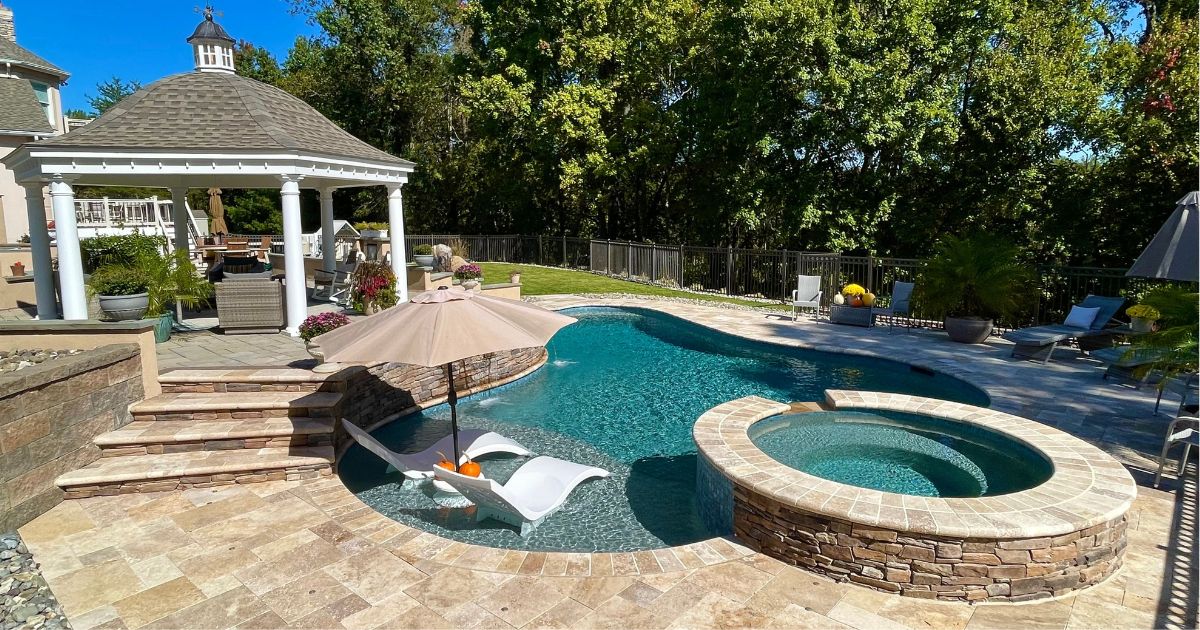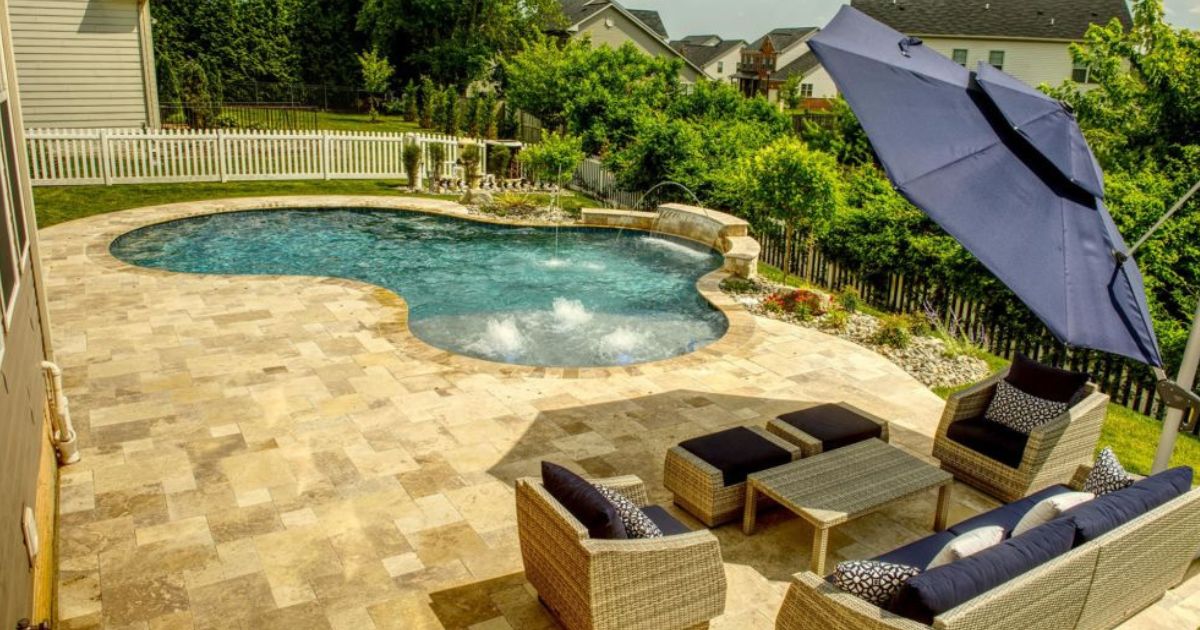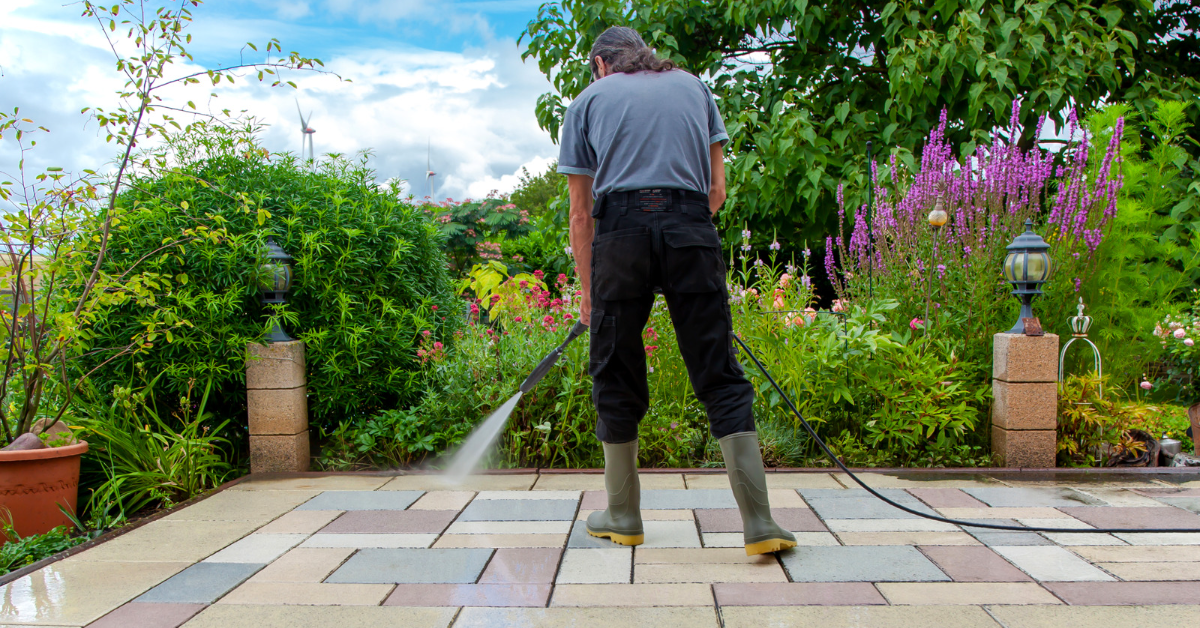If you spent part of the summer visiting friends and neighbors who have jaw-dropping backyard…
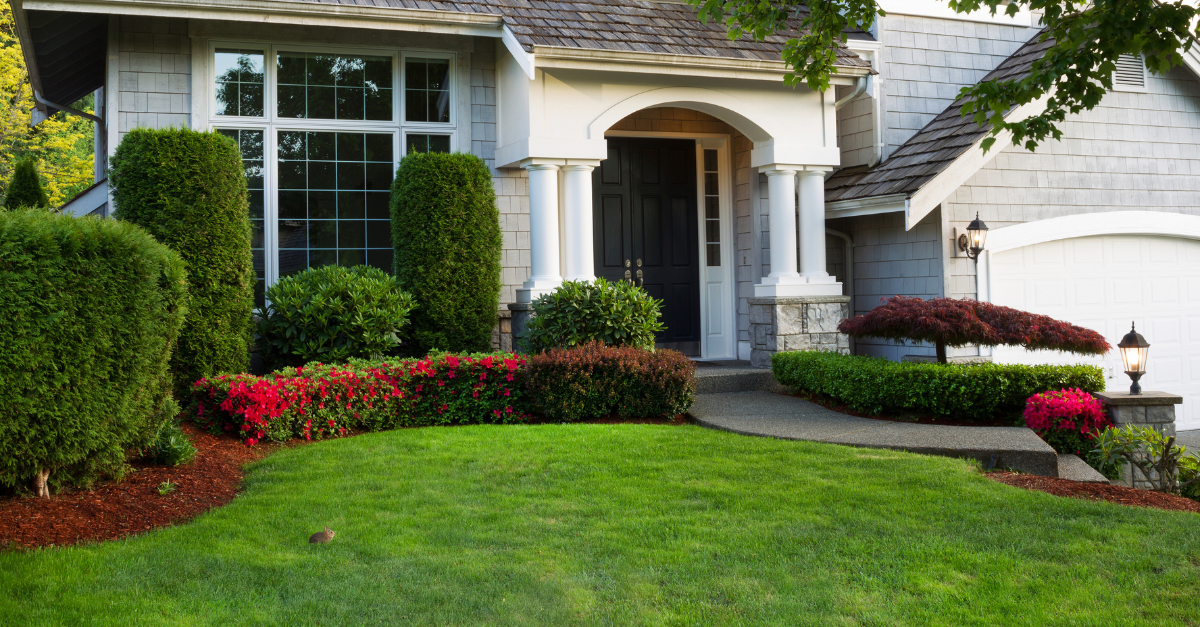
How to Blend Hardscaping and Softscaping for a Balanced Landscape
Balancing softscape and hardscape elements is key when creating a stunning outdoor space.
Though different, these two components work together to enhance the beauty, functionality, and sustainability of your landscape design.
In this blog, we’ll examine softscaping and hardscaping, their unique elements and differences, and provide tips on how to blend them effectively.
What is a Softscape?
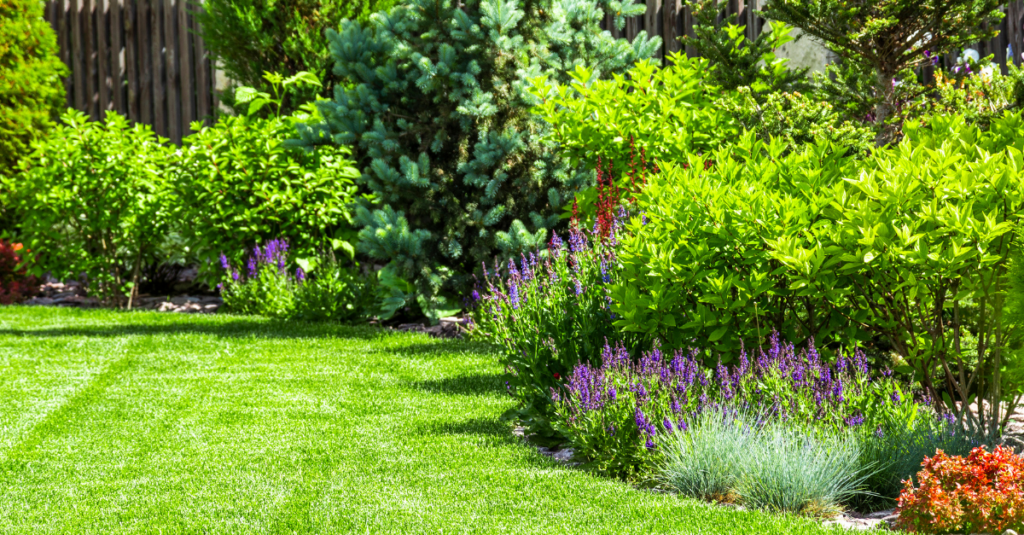
Softscape refers to the living, horticultural elements of your landscape design. These include plants, trees, shrubs, flowers, and other organic materials.
It’s dynamic and provides color, texture, and seasonal changes to your outdoor environment. Softscaping—the process of incorporating softscape elements—plays a vital role not only in enhancing the aesthetic appeal of your property but also in promoting biodiversity and environmental health.
What are the elements of a softscape?
-
Plants & Flowers
Plants are the foundation of any softscape, bringing vibrant colors, textures, and fragrances to your landscape. They add seasonal interest and variety, creating a dynamic outdoor space.
Plants and flowers can be used to highlight garden features, define pathways, and create stunning focal points that draw the eye. They also attract pollinators, support local wildlife, and improve air quality.
-
Trees and Shrubs
Trees and shrubs add structure, beauty, and functionality to your landscape. Trees provide shade, improve air quality, and create a sense of scale and permanence in your outdoor space. They can also serve as focal points, anchoring your outdoor design.
Shrubs offer year-round interest with their varied forms, colors, and textures, and they can be used to create natural borders, privacy screens, or garden accents.
-
Lawns
Lawns are a fundamental element of softscaping, providing a lush, green canvas that enhances the overall beauty of your outdoor space.
A well-maintained lawn improves aesthetic appeal and contributes to ecosystem health by reducing soil erosion, filtering pollutants, and providing a habitat for beneficial insects.
-
Soil and Mulch
Soil and mulch play vital roles in the health and aesthetics of your softscape.
Quality soil provides necessary nutrients, and mulch helps retain moisture, regulate soil temperature, and suppress weed growth, all while adding a polished and cohesive look to your garden beds.
-
Irrigation and Drainage Systems
Irrigation and drainage systems keep your landscape healthy. Proper irrigation systems deliver the right amount of water to your plants, lawns, and gardens, promoting vigorous growth and reducing water waste.
Effective drainage systems prevent water accumulation and soil erosion, protecting your softscaping and hardscaping features from damage. These systems can be tailored to your landscape’s specific needs, providing efficient and consistent watering.
Softscape and Hardscape Differences
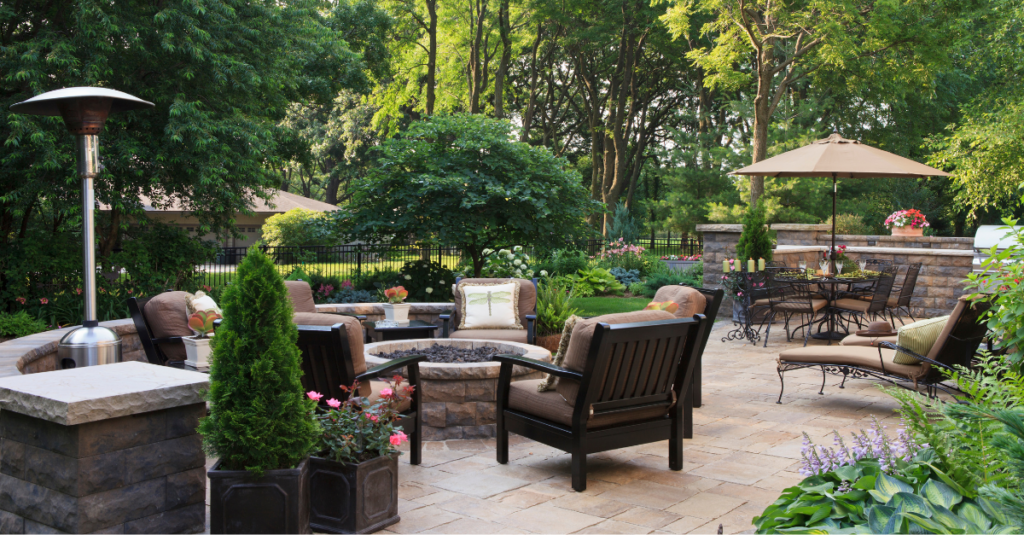
Softscape and hardscape elements are distinct components of landscape design, each serving different functions and requiring different maintenance approaches:
Softscape:
- Living Elements: Plants, trees, shrubs, and flowers.
- Maintenance: Requires ongoing care, including watering, pruning, and fertilizing.
- Benefits: Adds color, texture, and seasonal variation to the landscape and supports biodiversity.
Hardscape:
- Non-Living Elements: Pathways, patios, retaining walls, and other structures.
- Maintenance: Requires less frequent upkeep compared to softscape.
- Benefits: Provides structure, organization, and functionality to the landscape design.
How to Blend Hardscape and Softscapes
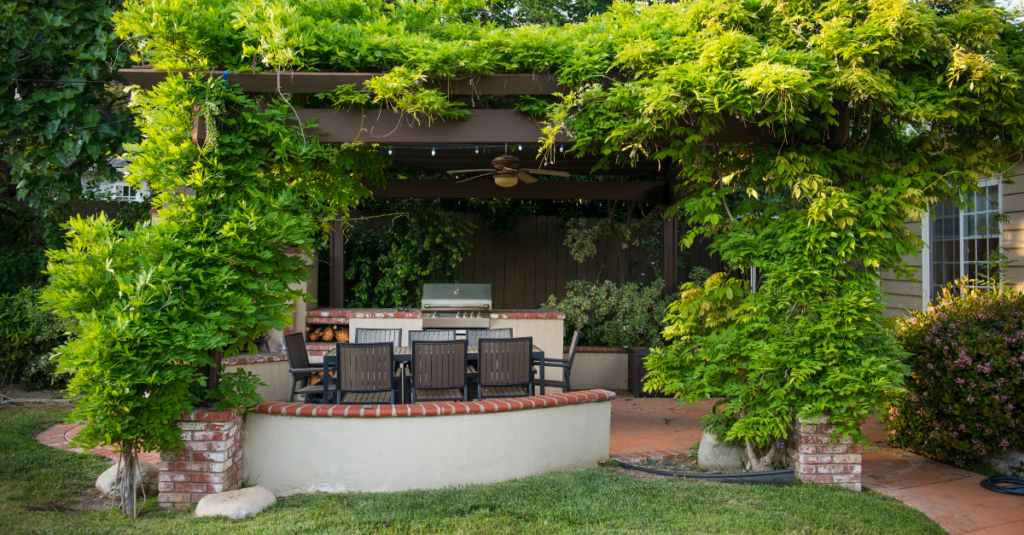
A harmonious blend of hard and softscape elements is essential for creating an inviting and visually appealing landscape. Here are some tips to achieve this balance:
1. Proportion and Scale
Balance the amount of hardscape (e.g., pathways, patios) with softscape (plants, lawns) to create a natural and inviting environment. Avoid overwhelming the space with too much of either.
2. Transition Zones
Soften the edges of hardscape elements with plants and shrubs to create a seamless transition between different areas of your landscape.
3. Layering
Create depth and interest by layering plants of different heights and textures. This technique softens the look of the hardscape and enhances visual appeal.
4. Color and Texture
Use a variety of plants with complementary colors and textures to create a cohesive and harmonious design.
5. Focal Points
Consider hardscape elements like benches, pergolas, or water features as focal points in your softscape design. You can also add trees and shrubs amidst hardscape elements to draw the eye.
6. Maintenance Considerations
Plan for the maintenance needs of both hardscape and softscape elements to ensure the longevity and health of your landscape.
Incorporating Hardscape and Softscape into Your Landscape Design
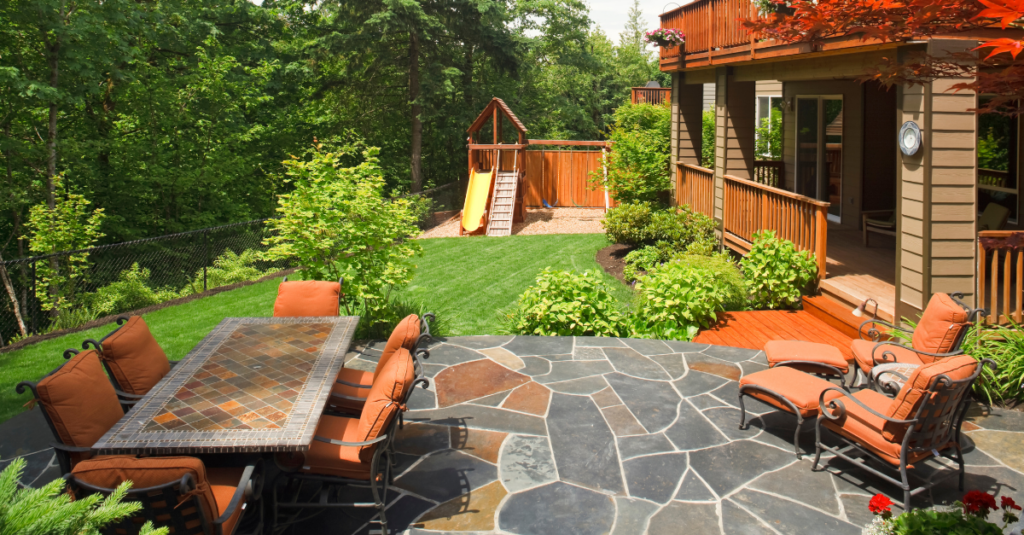
A well-balanced landscape design incorporates elements from both hardscape and softscape categories. While hardscape provides structure and organization, softscape adds color, texture, and life to your outdoor space.
When designing your landscape, consider the following:
- Functionality: Plan hardscape elements such as pathways, patios, and retaining walls to define spaces and provide practical solutions for outdoor living.
- Aesthetic Appeal: Use softscape elements strategically to soften the look of hardscape and create a natural and inviting environment.
- Environmental Impact: Both hardscape and softscape elements can impact the environment. To minimize environmental impact, choose plants that are native to your region and use sustainable hardscape materials.
Achieving a balanced and harmonious landscape design involves understanding the roles and differences between softscape and hardscape elements. By thoughtfully integrating both elements, you can create a beautiful, functional, and sustainable outdoor space.
Whether you’re starting from scratch or renovating an existing landscape, the key is to blend hardscape and softscape elements to enhance the natural beauty of your surroundings.
Remember, a well-designed landscape can increase property value, improve quality of life, and provide a sanctuary for you and your family to enjoy for years to come.
Make It Exceptional. Make It Woodfield.
If you’re ready to transform your outdoor space, contact us at Woodfield Outdoors.
Our team of professionals is here to help you create the landscape of your dreams, balancing hardscape and softscape elements to perfection.

